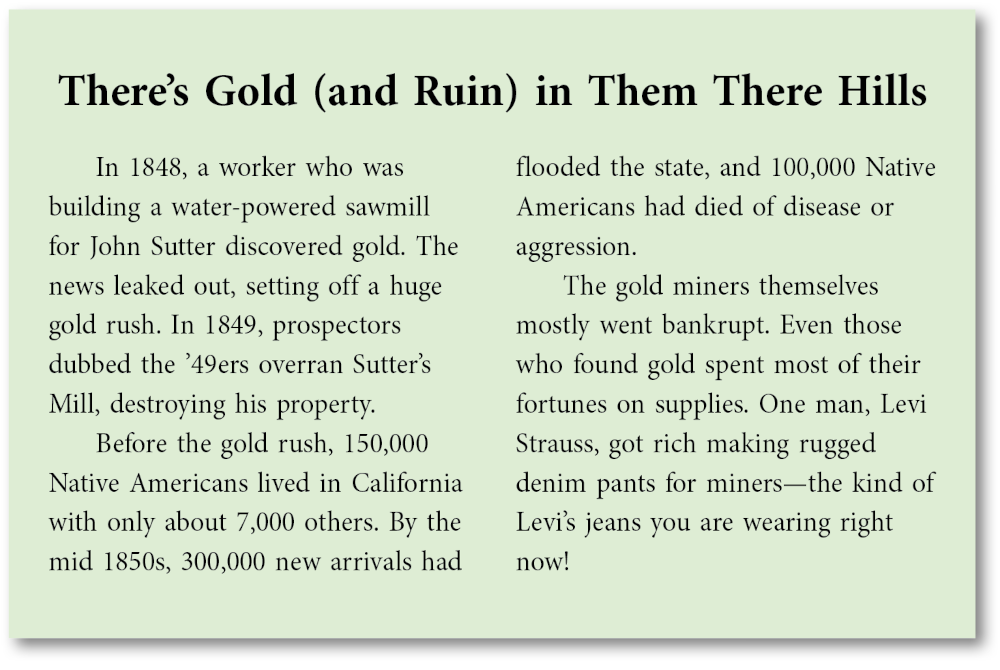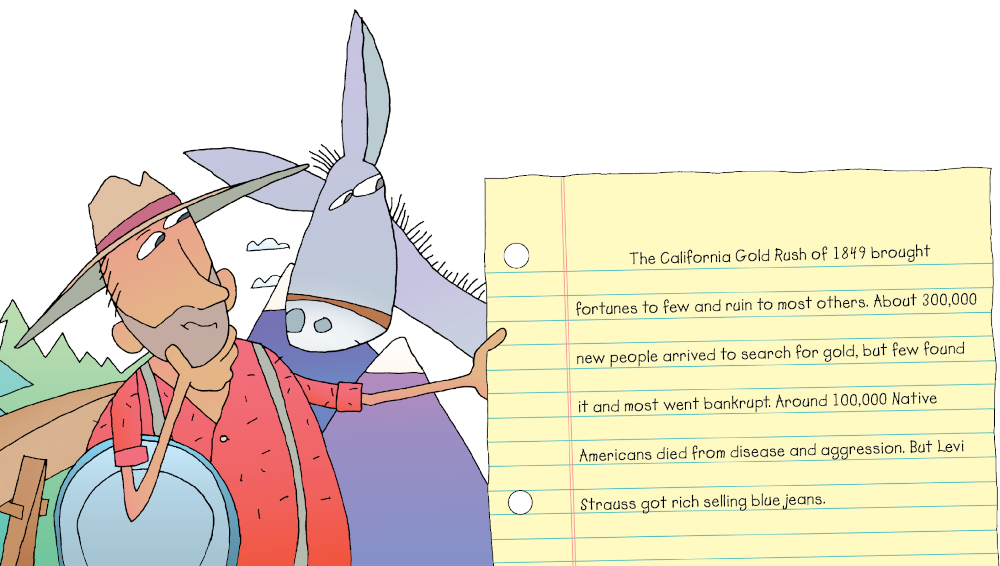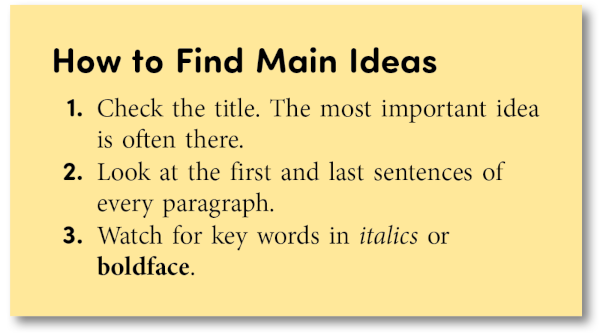WT 166
Page 166
Writing Summaries
The same ideas can come in different sizes: an article, a paragraph, and even a topic sentence. You know that you understand ideas if you can summarize them.
Panning for Gold
A summary expresses ideas in a short form. You sift out the main ideas of a longer work and condense them into a clear paragraph. (You can practice summarizing with this activity.)
WT 167
Page 167
Original Reading Selection
Read this article, and then study the summary below. The summary includes only main ideas.


WT 168
Page 168
Writing a Summary
Prewriting
Read Actively 🟪 Pay close attention as you read the material that you will summarize.
🟪 Read once to get the general meaning.
🟪 Read again to focus on specific details.
🟪 Then jot down the main ideas from the reading. (See the steps below for help.)
 © Thoughtful Learning 2025
© Thoughtful Learning 2025
🟪 Read again to focus on specific details.
🟪 Then jot down the main ideas from the reading. (See the steps below for help.)
